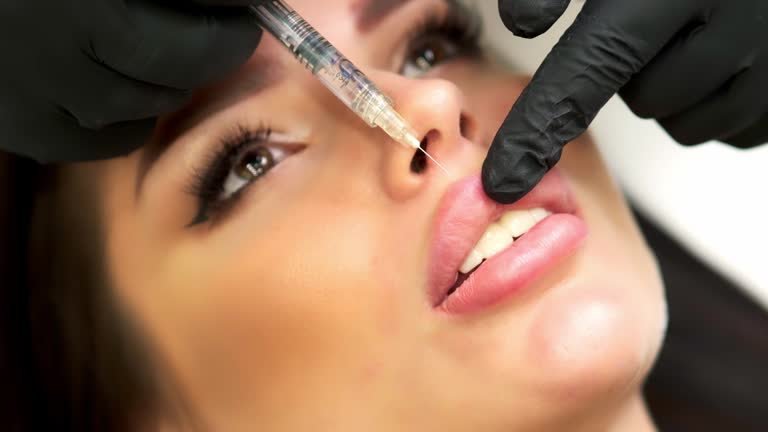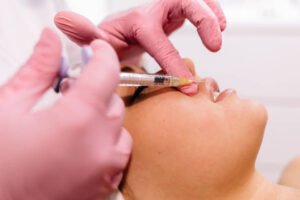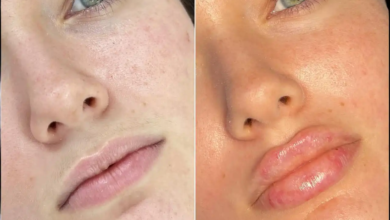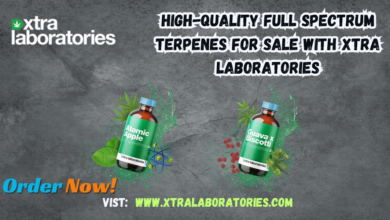
Introduction
Lip Augmentation Abu Dhabi has gained immense popularity in recent years, allowing individuals to achieve fuller, more defined lips. Whether it’s through hyaluronic acid fillers or fat grafting, the results can significantly enhance facial aesthetics. However, the journey doesn’t end with the procedure; proper aftercare is crucial for ensuring the best results and minimizing complications. This article explores essential aftercare tips for lip augmentation success.
Understanding Lip Augmentation
Types of Lip Augmentation Procedures
Lip augmentation can be performed using several methods, including:
- Hyaluronic Acid Fillers: Popular due to their reversibility and natural-looking results.
- Fat Grafting: Involves taking fat from another area of the body and injecting it into the lips.
- Implants: Silicone implants provide permanent results but come with more significant risks.
Common Reasons for Lip Augmentation
People seek lip augmentation for various reasons, including:
- Enhancing volume and shape
- Balancing asymmetrical lips
- Restoring lip volume lost due to aging

Immediate Aftercare Tips
First 24 Hours: What to Expect
After the procedure, it’s normal to experience some swelling, bruising, and tenderness. These effects are temporary and can vary in intensity from person to person.
Recommended Actions Right After the Procedure
- Rest: Avoid strenuous activities for at least 24 hours.
- Ice: Apply ice packs to the lips to reduce swelling.
Managing Swelling and Bruising
Ice Packs: How and When to Use Them
Using ice packs is an effective way to minimize swelling. Apply them for 10-15 minutes every hour during the first 24 hours. Ensure the ice pack is wrapped in a cloth to avoid direct contact with the skin.
Over-the-Counter Medications
Consider taking over-the-counter pain relief medications such as ibuprofen or acetaminophen if discomfort arises. Always consult your practitioner before taking any medication.
Hygiene Practices Post-Augmentation
Importance of Keeping Lips Clean
Maintaining cleanliness is vital to prevent infections. Bacteria can easily enter through the injection sites, leading to complications.
Recommended Cleansing Techniques
Gently clean the lips with mild soap and water, or use a saline solution. Avoid scrubbing the area; instead, dab it lightly with a clean cloth.
Dietary Considerations
Foods to Avoid After Lip Augmentation
To prevent excessive swelling, avoid salty and spicy foods immediately after the procedure. Alcohol can also exacerbate swelling and should be avoided for at least 24 hours.
Hydration: Importance of Drinking Water
Staying hydrated is crucial. Drink plenty of water to aid recovery and keep your skin healthy. Avoid caffeine and carbonated drinks, as they may lead to dehydration.
Skin Care Routine for Enhanced Results
Suitable Products for Post-Augmentation Care
Choose gentle, non-irritating products for your skincare routine. Look for hydrating lip balms without harsh chemicals.
Avoiding Irritants and Allergens
Be cautious with new skincare products. Avoid fragrances and exfoliants in the lip area for at least a week to reduce the risk of irritation.
Avoiding Physical Activities
Exercise and Its Impact on Healing
Refrain from strenuous workouts and heavy lifting for at least 48 hours post-procedure. Increased blood flow can heighten swelling and delay healing.
Duration to Avoid Strenuous Activities
Consult your practitioner regarding when you can safely return to your regular exercise routine. Generally, light activities can resume after 48 hours.
Long-Term Care for Lip Augmentation
Maintenance and Follow-Up Treatments
Regular maintenance is key to prolonging results. Discuss follow-up appointments with your practitioner to determine the best schedule for additional treatments.
Signs of Complications to Look Out For
Be vigilant about signs of complications, such as severe swelling, discoloration, or excessive pain. If you notice any concerning symptoms, contact your provider immediately.
Consulting Your Provider
Importance of Communication with Your Practitioner
Maintain open communication with your practitioner throughout the healing process. Don’t hesitate to ask questions or express concerns about your recovery.
When to Seek Help or Clarification
If you experience unexpected side effects or if the results are not as anticipated, reach out to your provider for advice and reassurance.
Emotional and Psychological Aspects
Adjusting to Your New Look
The initial change may take some getting used to. Allow yourself time to adjust to your new appearance, as it may take a few days for the swelling to subside fully.
Managing Expectations
Understand that results can vary and may not be instant. Set realistic expectations for your recovery process, and remember that patience is key.
Frequently Asked Questions (FAQs)
Common Concerns about Aftercare
- How long does swelling last?
- Swelling typically peaks within 48 hours and can last up to a week.
- Can I wear makeup after the procedure?
- It’s best to avoid makeup on the lips for at least 24 hours to prevent irritation.
- What should I do if I experience excessive bruising?
- Bruising is common; however, if it worsens, consult your practitioner.
Clarifying Myths Related to Lip Augmentation
- Myth: Lip augmentation results are permanent.
- Fact: Results vary based on the type of procedure and may require maintenance.
Conclusion
Lip augmentation can be a transformative experience, enhancing your confidence and appearance. However, the importance of proper aftercare cannot be overstated. By following these tips and maintaining open communication with your practitioner, you can ensure a successful recovery and enjoy your beautiful new lips. Remember, patience and care are vital components of achieving the best results from your lip augmentation procedure.


